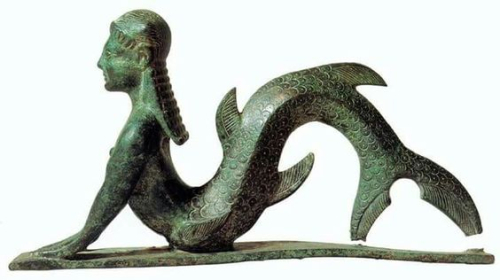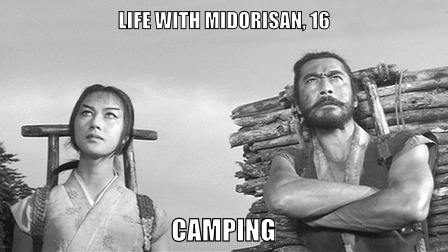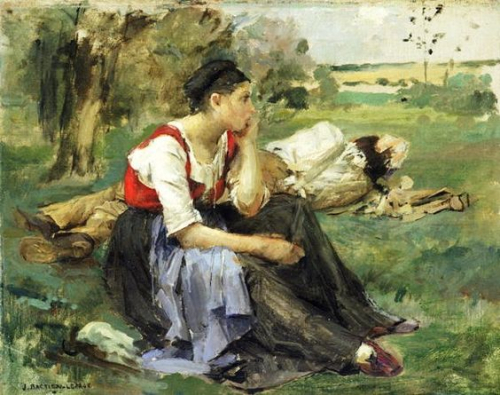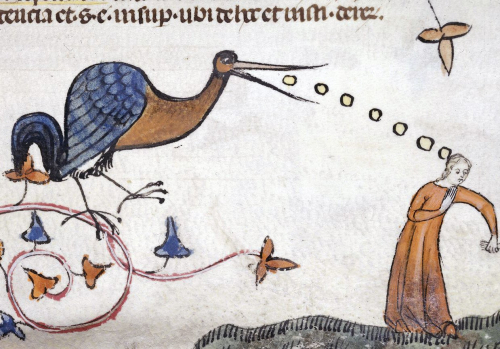Midori Snyder's Blog, page 30
March 8, 2017
Meme-ification Continues: Best One Ever for This Day
March 7, 2017
Rendering Unto Caesar...
Tax time and from the million slips of paper all over the kitchen table, has come order: now calculated, accounted for, and sent out to the man who will hopefully keep what is mine and render the rest...
*Art: Paul Vos, The Tax Collector, 1543
March 4, 2017
The Sirens of Homer's Odyssey I
Homer offers one of the earliest descriptions of the Sirens in The Odyssey. It comes as Odysseus is leaving Hades, having gotten advice from just about all of the shades in his past. Circe makes it clear that there are still significant obstacles to his journey home and offers suggestions as to how to hear the "joy" of the Sirens' song without losing himself, his men, or the ship on the rocky shoals of Anthemoessa where a certain death awaits them. (You can find the text of this passage here Od. Book XII, lines 36-58, translation by Richard Latimore)
From SDR* on the "Siren problem:" There is no definitive evidence of their mythological origins which has allowed numerous and often contradictory representations of the Sirens. They do not seem to have a geneological tradition of a well-known or myth which has allowed variations of their form (birds, maidens, mermaids) and narrative meanings:
"It was precisely because neither the singer of the tales nor his audience knew much about the Sirens that Homer was able to turn them into such suggestive and ambivilent presences, endowed to the utmost degree with the power of vagueness. This is ultimately the reason why Homer chose characters like Circe and Kalypso from the vast pantheon of minor female divinities which populate Greek mythology, for it gave him the freedom he needed to suit them to his story rather than having to suit his story to a clearly defined, pre-existing character."
"One should keep in mind that the section of the Odyssey known as the Wanderings...probably drew on a vast array of folktale motifs which were adapted, combined or expanded in order to suit the Nostos ** and the character of Odysseus. One should not expect to find any direct correspondence between any given episode...and a particular type of folktale, but rather a fragmentation of various folktales and a condensation of different motifs into what became in the long process of oral composition and transmission -- a new organic tale." (Ok, this passage from SWR reads like my entire writing process! )
Connections to Circe, Goddess of Knots, Weaving, and Song.
"Circe's song and her weaving are an integral part of her character and denote her divinity: singing and weaving are her "habitual" mode of being; it is what she does when mortals are not caught in her web. There is no question that her song -- inextricably tied to her weaving--acts as a lure for her unsuspecting victims....Circe's song, like that of the Sirens, is a deceptive bait and that it represents an alluring and comforting temptation...the Sirens' song too is perceived as a feminine temptation....Throughout Greek mythology, magic song -- like weaving--apears to be a feminine prerogative, distinguishable from the more instrumental music of Orpheus or the narrative of the bard. Circe's song, like Kalypso's, is "song accompanied by the loom," and the medieval mermaid accompanying her song with a comb seems to be a descendant of this alluring combination. "
*De Sirenibus: An Inquiry into Sirens from Homer to Shakespeare by Seigfried de Rachewiltz, Garland Publishing, Inc.New York, 1987.
**And I like this reference to the word describing the theme of Odysseus' journey (and all others like him who combine heroism and a long sea journey.) "Nostos (Ancient Greek: ������������) is a theme used in Greek literature which includes an epic hero returning home by sea. It is a high level of heroism or greatness. This journey is usually very extensive and includes being shipwrecked in an unknown location and going through certain trials that test the hero."
March 3, 2017
Excerpt From The Innamorati: Erminia, the Siren
I am working on a series of posts on my research on the sirens -- all of which went into creating the character if Erminia, the siren in The Innamorati. I decided it might help to provide something from the novel as an opportunity to see how the research transforms into character. So here the chapter where she is introduced.
Erminia picked her way carefully between the rocks and gnarled tree roots of the path as she made her way down a steep slope to the sea. Behind her, the hills rose into pleated crests, lined with cedar, oak, and pine. In the dawn light, the gorse bloomed bright yellow amid the green leaves. The sky was streaked pink, striped with scudding clouds that were chased by an ocean breeze. The last fingers of the night's mist clung to the trees.
She smiled, breathing in the fresh taste of the sea. She was tall, big-boned at the wrists and heavyset across the shoulders. Her face was long and square, her black hair a matted tangle of curls and snagged twigs. Beneath dark eyebrows her eyes were surprisingly light in color, shifting from grey to sapphire. Erminia moved confidently down the switchback trail, unafraid of the steep slope or the hazards it presented. Long muscles in her thighs bunched as each calloused heel dug into the path for balance until she reached a rocky coastline where boulders worn into smooth slabs tumbled into the water. Erminia stared hungrily at the waves churning and breaking over the rocks, casting plumes of white foam into the air.
She inhaled through her parted lips and held her breath. In that mouthful of sea-damp air, she tasted every shore that the sea had touched. And from the taste of it, she exhaled visions of what had dipped into the water: the bitter olive pits tossed into the sea farther up the coast; the peppery trail of spices carried on a ship into Genoa; the fear-sweat of horses confined in the hold of another ship. With each breath Erminia took and released, something else materialized in the air above her head: a canvas sail, torn and mended; a sailor's wool sweater rank with lanolin from the sheep; old wine bottles; the cast-off beak of an octopus; a basil-seasoned mussel shell. Read More>>>
February 26, 2017
The Meme-ification of Forty Plus Years of Marriage.
My wonderful husband has fallen in love with creating memes and, using the sort of humor that comes with many long years of marriage, describes our life together. And because we have been doing martial arts as long as we have been married, it has taken a particular form of expression, half way between battle and compromise. These are some of my favorites -- so far, as they are becoming numerous, appearing almost daily on his facebook as love-notes to his sometimes difficult (in all the good ways) wife.
February 23, 2017
Finished Editing New Moon, Tackling Sadar's Keep
I am happy that I finished re-editing New Moon. Mostly, I leaned it up, took out the first time writer adverbs, streamlined awkward sentences, standardized spellings (that was suprise) and in general, enjoyed taking up a long ago project and giving it the polish the harried writer with two small children didn't have time to do back then. It is my hope that anyone who the read the earlier edition and re-reads this one will not notice what is missing -- which will mean that I have preserved that which was good and made it more apparent.
The month of March is reserved for Sadar's Keep -- otherwise known as the dreaded middle novel in a trilogy; the novel that is always longer than it should be, the novel that begins after the fact but doesn't reach a final conclusion. I am bracing myself for this book. I loved writing it and that may be the problem, that I loved it too much. I lingered too much, taking my time. So, the task now will be to carefully, surgically, remove about 20k words and tighten it up. Make it march a bit. There's lots of wonderful moments, and new characters that I greatly admire. I want them to shine, the pace to be driven by their stories and not my desire to lie down in the Avadares Mountains and smell the pines. It will a be full month. But I am determined to make it sing.
Art: Sergio Cerchi, Jules Bastien-Lepage - Resting Peasants, 1877, Frances Gearhart, Sierre Spurs, 1935
February 22, 2017
Returning to the Research Notebooks
Over the next few months, I will be retyping pretty much all of my research notes for my novels into posts -- in large part because I can never find what I am looking for when going through the battered 10-30 years old college-ruled notebooks. And because when I do happen to re-read them I am always inspired by a whole range of new ideas -- that for one reason or another didn't make it into the final work but still offer great opportunites. Small, but tasty bits of information that helped form the scaffold for an earlier work, but were never featured. For example I have at least twenty or thirty different descriptions of ancient, medieval, and renaissance mazes, with commentaries by the scholars of the time, and every one of those mazes is a new world waiting for a story. So bear with me -- or not -- but my motives are two fold: to better organize my research (and bless the use of catagories!), and to share some interesting moments out of history, myth, medival literary theory, lost words and killer insults that still ignite my imagination and perhaps yours.
Cycle of frescos of the 12 labors of the months Location Trento, IItaly, Castello del Buonconsiglio (Bishops Castle), Torre del'Aquila (Tower of the eagle) Master Wenceslas of Bohemia 1397-1400
Organizing Research Notes: Or Too Many Notebooks!
Over the next few months, I will retyping pretty much all of my research notes for my novels into posts -- in large part because I can never find what I am looking for when going through the battered 10-30 years old college-rulled notebooks. And because when I do happen to re-read them I am always inspired by a whole range of new ideas -- that for one reason or another didn't make it into the final work but still offer great ideas. Small but oh so tasty bits of information that helped form a scaffold for an earlier work, but were never featured. For example I have at least twenty or thirty different descriptions of ancient, medieval, and renaissance mazes, with commentaries by the scholars of the time, and every one of those mazes is a new world waiting for a story. So bear with me -- or not -- but my motives are two fold: to better organize my research (and bless the use of catagories!), and to share some interesting moments out of history that still ignite my imagination and perhaps yours.
Cycle of frescos of the 12 labors of the months Location Trento, IItaly, Castello del Buonconsiglio (Bishops Castle), Torre del'Aquila (Tower of the eagle) Master Wenceslas of Bohemia 1397-1400
February 20, 2017
The Strong Mom GIF: Just Tap to Watch Her Workout
February 17, 2017
"Where Do You Get The Ideas For Your Novels?" Answer
Midori Snyder's Blog
- Midori Snyder's profile
- 87 followers

















